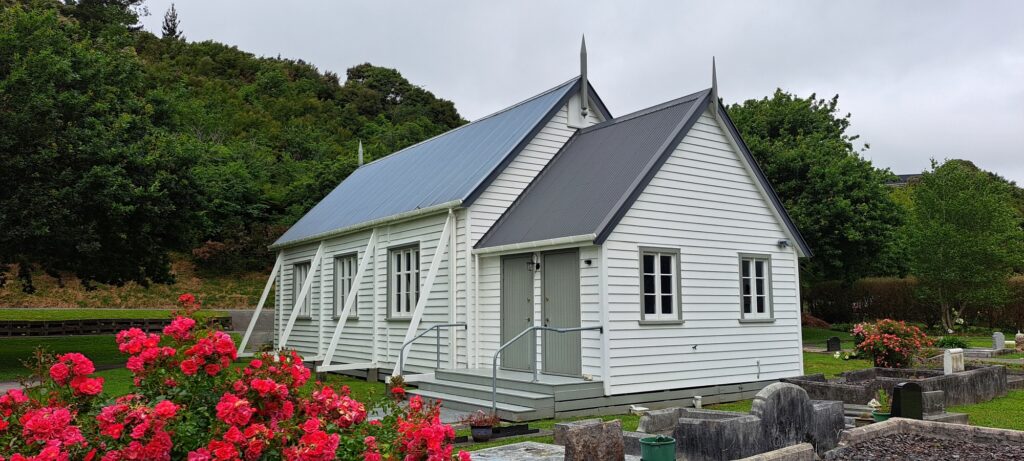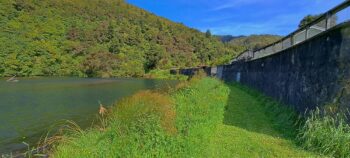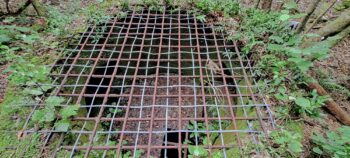Wainuiomata’s history is a compelling story of pioneers navigating an untamed wilderness.
The isolation of Wainuiomata presented challenges for its early settlers. In the 1850s and 1860s, access to the valley was restricted to narrow hill routes. Despite these difficulties, the first European settlements appeared along the riverbanks, driven by the burgeoning timber industry that supplied wood to the Wellington region. This area, now known as ‘Homedale,’ transitioned to farming after the forests were cleared. A few decades later, Sinclair Valley (later renamed Reservoir Valley) became Wellington’s main water source, leading to the construction of dams, pipelines, and related infrastructure. By the late 19th century, the valley was traversed by two main roads: Main Road and Fitzherbert Road, the latter commonly called ‘Swamp Road.’
The Timber Industry
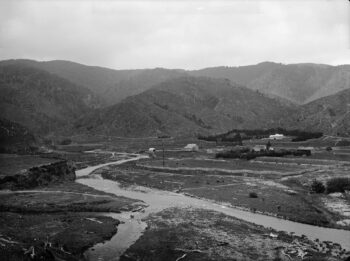 The Wainuiomata economy originally relied on timber milling extracted from the forests surrounding the Wainuiomata River. The Sinclair family logged what is now Moores Valley, Reservoir Valley, Skerretts Gully (Sunny Grove) and the Hine Road area. Their timber mills operated near the present-day crossroads of Whitcher Grove and Moores Valley Road. Meanwhile, the Prouse family undertook logging in the Coast Road area. Richard Prouse Sr. and his sons resided in what is currently known as the Faulke Area. Later, the Strand Brothers logged upper Moores Valley.
The Wainuiomata economy originally relied on timber milling extracted from the forests surrounding the Wainuiomata River. The Sinclair family logged what is now Moores Valley, Reservoir Valley, Skerretts Gully (Sunny Grove) and the Hine Road area. Their timber mills operated near the present-day crossroads of Whitcher Grove and Moores Valley Road. Meanwhile, the Prouse family undertook logging in the Coast Road area. Richard Prouse Sr. and his sons resided in what is currently known as the Faulke Area. Later, the Strand Brothers logged upper Moores Valley.
Waterworks
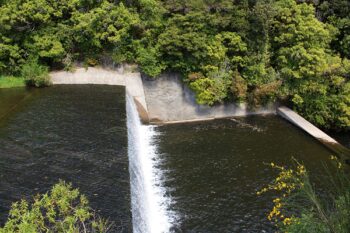 As the forests were cleared, sheep and dairy farming became key elements of the local economy. However, the upper reaches of the Wainuiomata River was selected as the site for a water reservoir, bringing an end to logging in that area. In 1880, an earth dam was constructed, along with a pipeline to supply water to Wellington. As demand for water in Wellington grew, a new dam, known as Morton Dam, was built between 1908 and 1911. It remained in operation until it was decommissioned in 1988. In 1924, a weir and pipeline were added from the Ōrongorongo Catchment. Today, the Wainuiomata/Ōrongorongo Water Collection Area provides approximately 15% to 20% of the Wellington region’s water supply.
As the forests were cleared, sheep and dairy farming became key elements of the local economy. However, the upper reaches of the Wainuiomata River was selected as the site for a water reservoir, bringing an end to logging in that area. In 1880, an earth dam was constructed, along with a pipeline to supply water to Wellington. As demand for water in Wellington grew, a new dam, known as Morton Dam, was built between 1908 and 1911. It remained in operation until it was decommissioned in 1988. In 1924, a weir and pipeline were added from the Ōrongorongo Catchment. Today, the Wainuiomata/Ōrongorongo Water Collection Area provides approximately 15% to 20% of the Wellington region’s water supply.
Roads
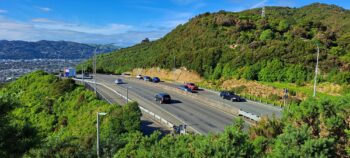 Initially, rugged tracks over steep hills were the only links between Wainuiomata and the Hutt Valley due to the area’s isolation. Wainuiomata Road, crucial for valley access today, evolved from a steep, winding route into a modern 4-lane, 80km/h highway, significantly straightened and expanded over time. It reduces to two lanes upon entering the valley, intersecting with Queen Street and The Strand, which make up the main commercial area. The road then concludes where Main Road and Fitzherbert Road begin.
Initially, rugged tracks over steep hills were the only links between Wainuiomata and the Hutt Valley due to the area’s isolation. Wainuiomata Road, crucial for valley access today, evolved from a steep, winding route into a modern 4-lane, 80km/h highway, significantly straightened and expanded over time. It reduces to two lanes upon entering the valley, intersecting with Queen Street and The Strand, which make up the main commercial area. The road then concludes where Main Road and Fitzherbert Road begin.
Housing
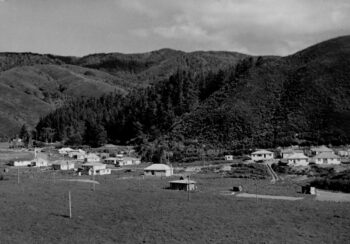 In the 1920s, Wainuiomata began to expand. In 1928, Wainui-o-Mata Development Limited acquired 1,600 hectares for residential subdivision. The Wainuiomata Tunnel project, started in 1932 to improve access, was delayed by the Great Depression, leading to investor losses. After World War II, affordable housing attracted many young families, turning Wainuiomata into a working-class area, nicknamed “Nappy Valley” in the 1950s. Today, many original homes are being replaced by modern units on the large quarter-acre sections common in the area.
In the 1920s, Wainuiomata began to expand. In 1928, Wainui-o-Mata Development Limited acquired 1,600 hectares for residential subdivision. The Wainuiomata Tunnel project, started in 1932 to improve access, was delayed by the Great Depression, leading to investor losses. After World War II, affordable housing attracted many young families, turning Wainuiomata into a working-class area, nicknamed “Nappy Valley” in the 1950s. Today, many original homes are being replaced by modern units on the large quarter-acre sections common in the area.
People
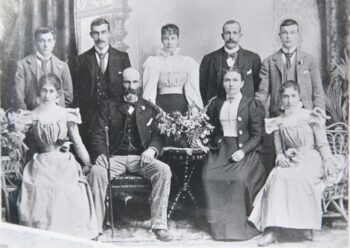 Wainuiomata’s history is shaped by the contributions of several notable families and individuals who played key roles in establishing the suburb. These founding families, such as the Burdans, Prouses, Woods, Riddifords, Sinclairs, and Jacksons, have become integral to the rich tapestry of Wainuiomata’s heritage. Their legacy continues to be an important part of the community’s identity.
Wainuiomata’s history is shaped by the contributions of several notable families and individuals who played key roles in establishing the suburb. These founding families, such as the Burdans, Prouses, Woods, Riddifords, Sinclairs, and Jacksons, have become integral to the rich tapestry of Wainuiomata’s heritage. Their legacy continues to be an important part of the community’s identity.
Historic Sites
Open exclusively on Sundays from 2 pm to 4 pm, this museum offers an immersive experience showcasing a diverse array of historical exhibits that vividly capture the essence of Wainuiomata’s early days. Housed within a historic school building on the grounds of Wainuiomata Primary School, it provides a fascinating glimpse into the area’s heritage.
Hidden Sites
Wainuiomata boasts a rich history, with numerous historic artifacts reclaimed by nature, now concealed within the bush. These relics and locations are preserved in the memories and memoirs of older generations. Yet, many of these sites remain accessible today, often hiding in plain sight.
Museum
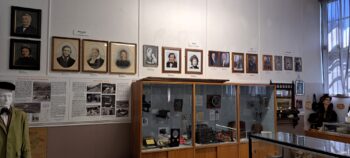 Open exclusively on Sundays from 2 pm to 4 pm, this museum offers an immersive experience showcasing a diverse array of historical exhibits that vividly capture the essence of Wainuiomata’s early days. Housed within a historic school building on the grounds of Wainuiomata Primary School, it provides a fascinating glimpse into the area’s heritage.
Open exclusively on Sundays from 2 pm to 4 pm, this museum offers an immersive experience showcasing a diverse array of historical exhibits that vividly capture the essence of Wainuiomata’s early days. Housed within a historic school building on the grounds of Wainuiomata Primary School, it provides a fascinating glimpse into the area’s heritage.
Articles on Wainuiomata’s History
Documenting Wainuiomata’s early history through articles, stories, and photos.

